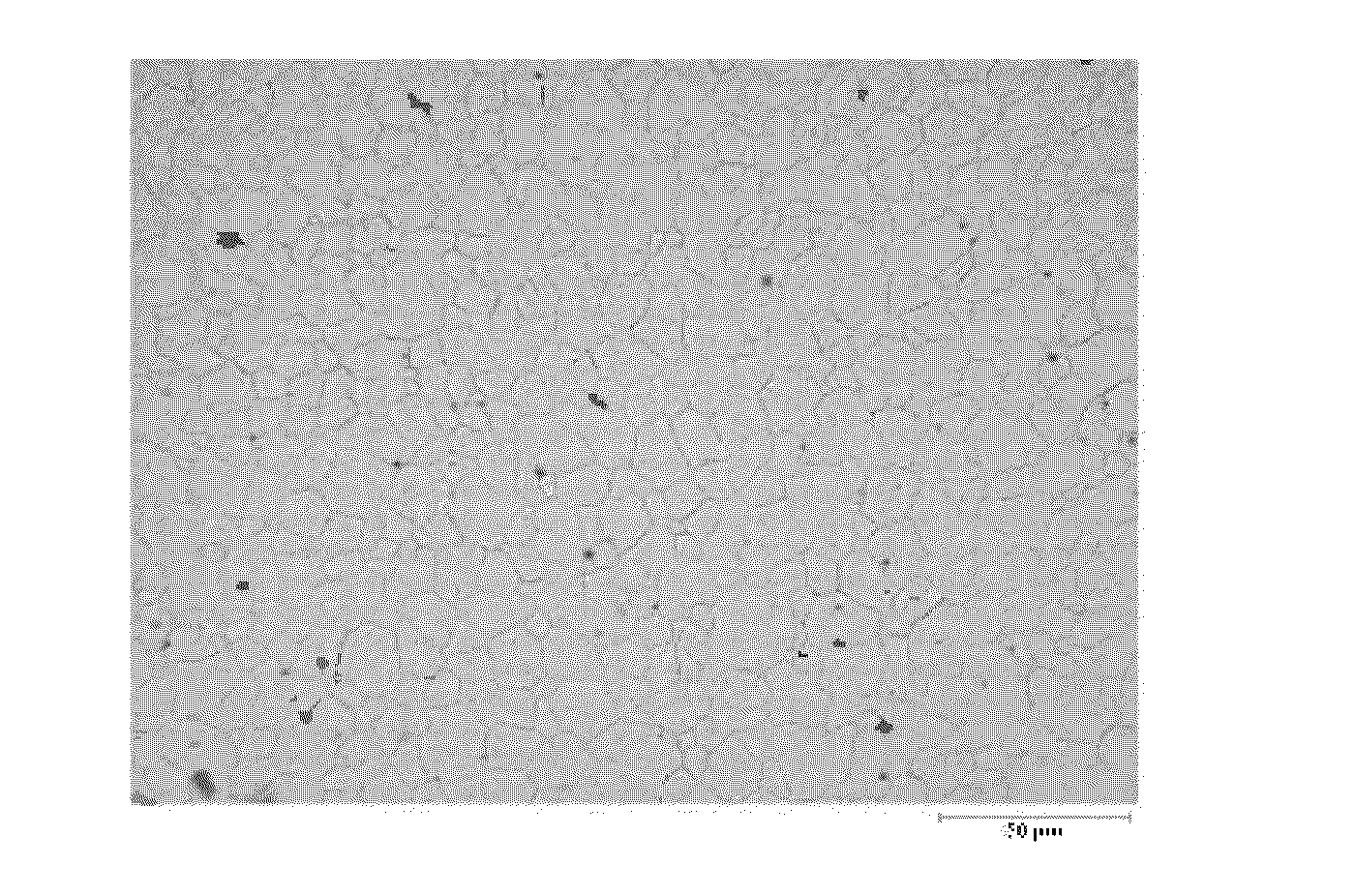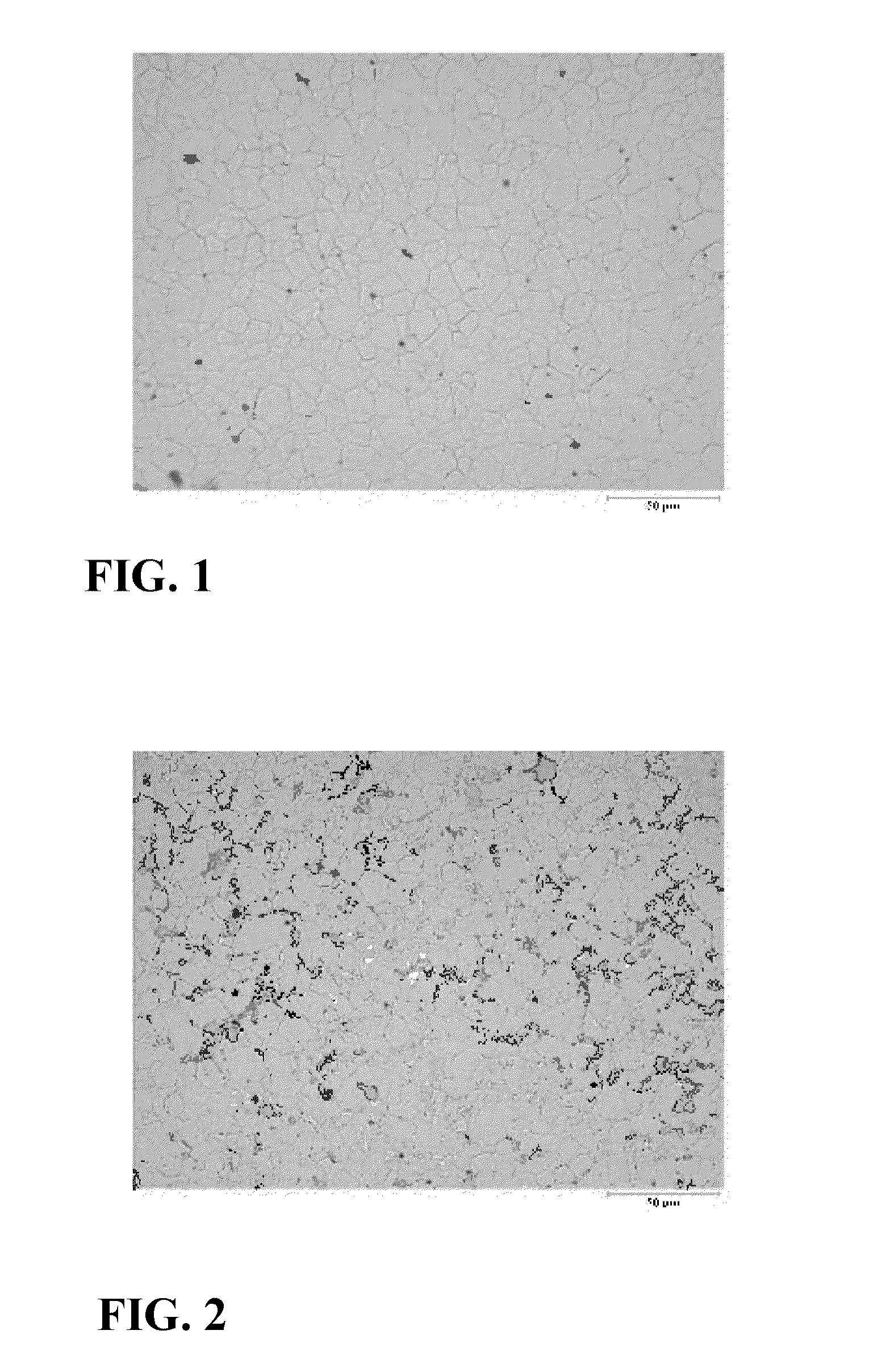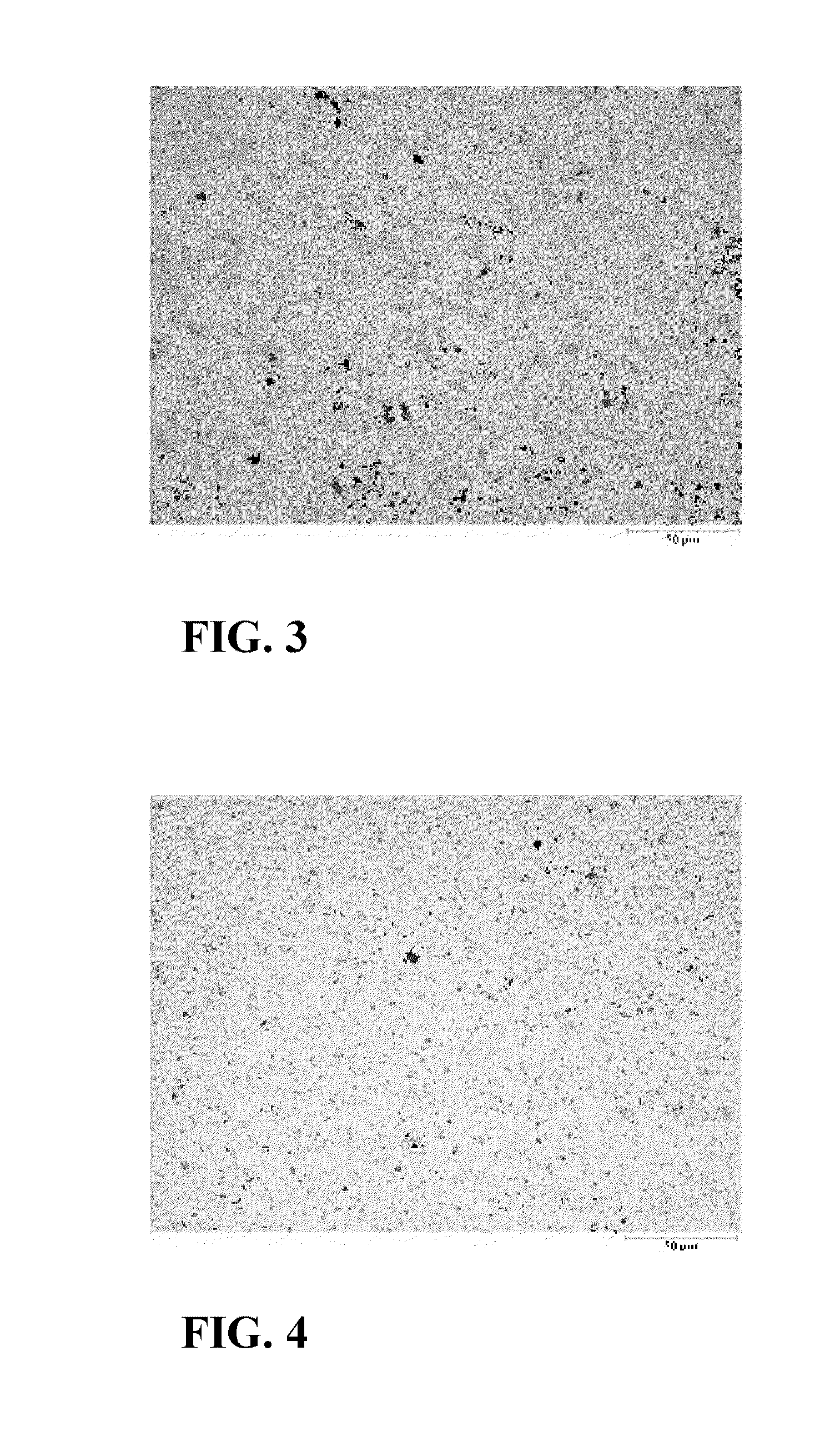Implant made of a biodegradable magnesium alloy
a biodegradable magnesium alloy and magnesium alloy technology, applied in the field of biodegradable magnesium alloy implants, can solve the problems of affecting mechanical properties, dramatic changes in microstructure, and limited use of biodegradable polymers, so as to and improve the mechanical properties of the material.
- Summary
- Abstract
- Description
- Claims
- Application Information
AI Technical Summary
Benefits of technology
Problems solved by technology
Method used
Image
Examples
example
Mg-4Y-2Nd-8Er-0.6Zr (MI0029) & Mg-4Y-8Er-0.6Zr (DF9546)
[0140]High purity (>99.9%) magnesium ingots are smelted in steel crucibles at 500-800° C. The melt is protected from burning and sludge formation using fluxless techniques with mixtures of protective gases, e.g. CO2 / 2% SF6 or argon / 2% SF6. After smelting the pure magnesium ingots, the temperature is raised to 680-860° C., and the respective amounts of alloy ingredients of Y, Nd and Er and Zr are added.
[0141]Before casting in a water-cooled mold to form bars with a nominal diameter of 120 mm and a length of 300 mm, the melt is homogenized by stirring. After casting and cooling the bars are machined to a nominal diameter of 75 mm with a length of 250 mm and homogenized for 8 hours at approximately 525° C.
[0142]The material is then reheated to 400-500° C., preferably 450° C., and extruded with the help of a hydraulic press. The resulting round rods have a diameter of 12.7 mm. Before further processing or testing, 30 cm long pieces ...
PUM
| Property | Measurement | Unit |
|---|---|---|
| temperature | aaaaa | aaaaa |
| length | aaaaa | aaaaa |
| diameter | aaaaa | aaaaa |
Abstract
Description
Claims
Application Information
 Login to View More
Login to View More - R&D
- Intellectual Property
- Life Sciences
- Materials
- Tech Scout
- Unparalleled Data Quality
- Higher Quality Content
- 60% Fewer Hallucinations
Browse by: Latest US Patents, China's latest patents, Technical Efficacy Thesaurus, Application Domain, Technology Topic, Popular Technical Reports.
© 2025 PatSnap. All rights reserved.Legal|Privacy policy|Modern Slavery Act Transparency Statement|Sitemap|About US| Contact US: help@patsnap.com



